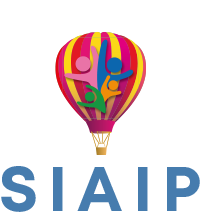Editorial
Issue 3 - 2024
Editorial
Article
The introduction of a vaccine against human papillomavirus (HPV) has not only led to an almost complete elimination of cervical cancer cases in women worldwide, but also to a significant reduction in oropharyngeal, anal and genital cancers in both sexes. With such brilliant results in terms of prevention, the HPV vaccine has qualified as the second (obviously only in chronological order) anti-cancer vaccine after the hepatitis B vaccine. Despite these successes, however, vaccination has encountered many difficulties, together with widespread mistrust by physicians and a certain hostility from families. The SIAIP Vaccine Committee wants to highlight these aspects by publishing this paper (p. 24): “HPV Vaccines: state of the art and novel approaches”.
In Italy, following a directive from the Health Ministry, HPV vaccination is “recommended and offered free of charge to girls and boys from 11 years of age. It is also recommended for immunocompromised patients, individuals with high-risk sexual behaviour, and women with cervical lesions”.
This recommendation is often disregarded by families who tend to postpone vaccination until late adolescence if not later in the unreasonable fear that HPV vaccination in itself could be a viaticum, an encouragement to begin a sexually active life. We, precisely as pediatricians, are witnessing more and more rapid changes in customs and values with an increasingly early age of initiation of sexual activity for which it is neither ethical nor prudent to delay vaccination after this age. The authors, following these considerations, invite all pediatricians to not forget the enormous protective value of this vaccine and to take charge of it themselves, encouraging families and children to proceed without delay to the vaccination.
Michele Miraglia del Giudice and colleagues address a current topic, namely artificial intelligence (AI), in the paper “ AllergoAssist 2.0: a Specialized Artificial Intelligence for Pediatric Allergology “, on page 36.
In the knowledge that AI is now an essential reality, which permeates all aspects of our lives, even the scientific ones – if you enter the words “artificial intelligence and allergy” in PUBMED, you will retrieve 1603 entries, of which 302 in 2024 alone – the authors follow up on an article published in 2022: “Framework for Augmented intelligence in Allergy & Immunology Practice and Research: A Work Group Report of the AAAAI Health Informatics, Technology & Education Committee 1 that analyzes the current and future role of AI in the diagnosis and management of allergic diseases.
The Naples group expands and deepens the content on the potential uses of AI, which can help the researcher in selecting both the tools to be used and in choosing the patients to be studied. Moreover, as part of clinical practice, AI may aid in diagnosis through the identification of specific algorithms and support the clinician in the formulation and choice of the most effective therapy for the individual patient.
Another paper of extreme interest, which is partly connected with AI, is an update by the SIAIP New Digital Technologies Commission: “Alternatives to the allergen specific nasal provocation test: role of molecular allergens for grasses in poly-sensitized children with seasonal allergic rhinitis” (p. 31).
As is now accepted, the most effective therapy for allergic rhinitis is allergen-specific immunotherapy (AIT), provided that the diagnosis is extremely accurate with precise identification of the actual allergen responsible for nasal symptoms. If it is true that the nasal provocation test is the gold standard to identify the triggering allergen, especially in polysensitized patients, it is also true that it is a complex and time-consuming test. As an alternative, the authors highlight that equivalent results can be obtained more simply by taking into consideration the clinical data as a whole, through the use of specific apps, and biological data, namely the presence and level of specific IgE and their most allergenic molecular components. This is a valid alternative and applicable in many more hospital settings.
Lastly, this issue there are also mini-reviews that were chosen for the relevance of the topic that was developed in the context of our most recent national congress in Genoa.
History
Published: October 7, 2024
Downloads
License
This work is licensed under a Creative Commons Attribution-NonCommercial-NoDerivatives 4.0 International License.
Copyright
Copyright (c) 2024 Italian Journal of Pediatric Allergy and Immunology
How to Cite
- Abstract viewed - 450 times
- pdf downloaded - 27 times



